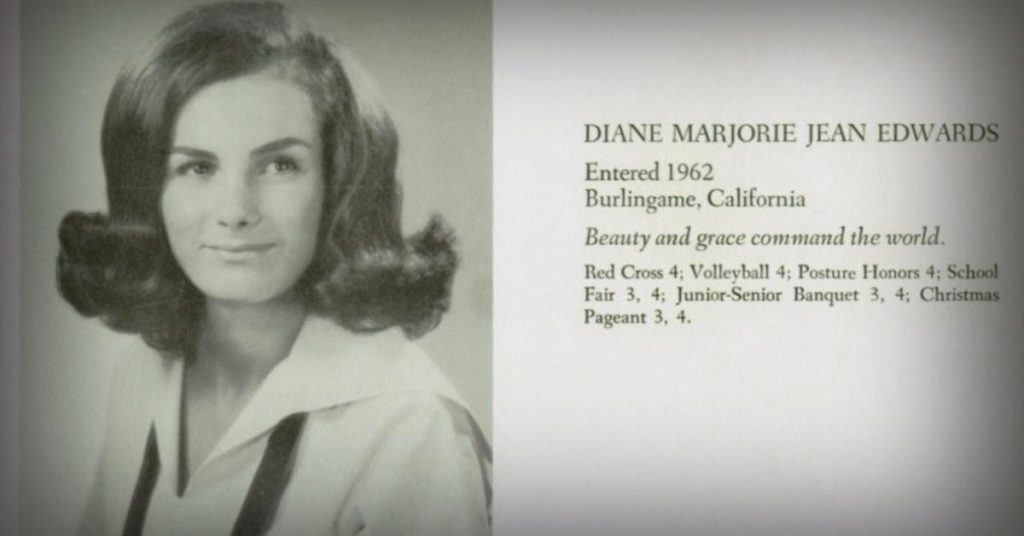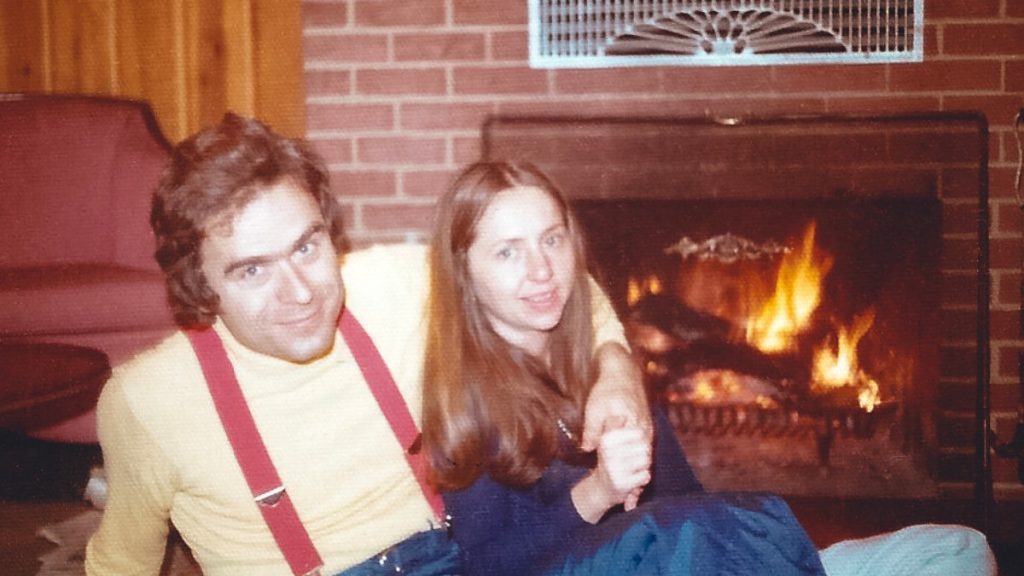
True Crime Studies: Another side of Ted Bundy is shown in Elizabeth Kendall’s ‘The Phantom Prince.’
More Videos
Published
4 years agoon
By
Rachel RothMost people can’t fathom the idea that their significant other might harbor a dark secret. You live with your spouse, eat with them, sleep beside them, you share your life with them. It seems impossible that they could hide something so big from you. Most people have a secret or two but there are some so dreadful in nature that even entertaining their possibility feels like a cloud of darkness eclipsing an entire household and that’s why when someone such as Ted Bundy emerges, their usually unsuspecting partner gets the brunt of the “how could you not know?” questions. They become a target of blame because they didn’t stop the monster sooner, exactly how a lot of people once viewed Elizabeth Kendall.
Elizabeth Kendall, real name Elizabeth Kloepfer, was Ted Bundy’s longtime girlfriend whom he was dating and practically living with during the bulk of his murders between 1974 to 1978. He murdered young women and then would come home to have dinner with her and her young daughter Molly, putting on that charming façade he was best known for.
Despite the public perception of Kendall being some innocent, naive moron who had no idea her boyfriend was a serial killer, she actually did have a hand in turning him in or at least raising suspicions against him. She reported him to the police hotline at least twice, gave multiple statements back when the police had him prematurely cleared, and actively cooperated with their requests. All while she was still dating him.
No one gives her credit for this though because, in the end, she was still standing beside him in court, choosing to love him rather than brokenly believing the truth. She wasn’t the only one who felt this way. Everyone who knew Bundy was shocked by the accusations. They couldn’t believe someone so intelligent, charming, and “handsome” could do such heinous things. So no, Kendall was not a starry-eyed moron who alone fell for one man’s tricks, but if she has one major personality flaw it’s that she’s incredibly indecisive.
The Obsession with Bundy
Let me say a few things about Mr. Theodore Bundy. Stop obsessing over the way he looked, and stop being shocked about his charm. He wasn’t the only charming motherf***er with a knife but unlike him, the likes of Ramirez, Manson, Shobhraj, Maeue, and Knowles all had at least one noticeable character flaw that allowed the public to believe in their accusations whether it was being a drug addict with rotten teeth or being a hippie with a cult. There is a persistent obsession with Bundy’s physical appearance and higher education that highlights our ridiculous assumptions when it comes to the Hollywood engrained perception of “good vs evil.” It’s not his crimes most people talk about, but how he didn’t fit the mold. Killers are not masked goons stalking the night, living on the streets, or slum houses with grotesque features and facial scars. They’re also not the embodiments of Satan as the press likes to present them.
Bundy was a psychopath, plain and simple. A psychopath that suffered from an inferiority complex. Two very real traits that when put together happen to make for a bad, angry combination. And if your under the notion that he was like Stu Macher and had no motive for his crimes, I advise you to look more closely at his victims.

Bundy’s targets each represented former girlfriend Diane Edwards, a woman he dated in college who dumped him for being, in her own words, “pitifully weak.” Matching her physical characteristics with softer and more inverted personalities, he murdered women in place of her. In a blunt analysis, Ted Bundy was a pathetic egotistical man who murdered in an attempt to overcompensate for the dominance he lacked on an emotional and intellectual level.
Even if it’s not the basis for the book, all this is shown further in Kendall’s memoir, The Phantom Prince: My Life with Ted Bundy. Although it might not have been her intentions, Kendall’s words smooth some of the edges that was Theodore Bundy. She describes him not as a monster, but as a man, an extremely vulnerable and unpredictable man that wrote annoying love letters and cried in her lap when he found out he was illegitimate. All his fears and doubts are put out on display as Kendall almost twiddles down this hellish beast into something made of flesh and bone, something insignificant. It’s actually a powerful thing because in humanizing Bundy, she’s almost stripped him of his power.

Elizabeth’s Story
The Phantom Prince was originally published in 1981, just one year after Bundy received his third death sentence, and ironically, was the same year Carole Ann Boone gave birth to his first and only child. Knowing he probably read this while on Death Row actually makes me laugh because I’m sure he just loved to hear about how many times he got on his knees and begged Kendall not to break up with him.
There are at least two editions of this book. The 1981 original and the updated edition republished on January 7, 2020. They offer different endings and introductions as the republished edition contains an afterthought Kendall added after gaining different perspectives over the years. The updated edition comes with photos and a special chapter written by Kendall’s daughter Molly who details her own memories of Bundy. The book is largely Kendall defending herself against the public. She describes the love she felt for the killer, as well as the all-consuming guilt she felt once she started to suspect him of the horrible crimes occurring on college campuses. It’s a compelling statement of emotional defense because as much as The Phantom Prince is Kendall explaining herself, it is also a long personal note to herself about coming to terms with what happened.
“It took years of work for me to accept who he was and what he had done. I still felt lingering shame that I had loved Ted Bundy. It was healing for me when women started telling their stories of sexual violence and assault as part of the #MeToo movement. I could relate to keeping experiences secret for fear of being judged.”
The Phantom Prince
The book starts a little before the year 1969 when the couple meets and then patiently runs throughout the course of their relationship. Kendall recounts memories she clearly ran over a thousand times in her mind during times of loneliness and confusion, detailing how she met and fell in love with who she thought was a soon-to-be successful lawyer. A man far out of her league. She describes him like a high school jock in a John Hughes movie who magically falls in love with the introverted nerdy girl. A jock that peaked senior year and loses nerdy girl well before she succeeds in post-graduation life.
This becomes the spine of her story, their back-and-forth turbulent romance that builds towards the breaking of the author. The actual crimes are not covered in depth because everything told in The Phantom Prince are things that Kendall herself was actively involved in. It covers her thoughts and feelings only, so while the murders are largely absent, we learn what she was feeling every time a new girl went missing and we see parts of the investigation that aren’t often shown.
There were a few moments that made me want to throw the book out the window. Points when I wanted to throttle Kendall for the amount of worship she gave a man who, even based on her own personal accounts, never seemed like much of a catch. Everything this guy did screamed, “give me attention!! Tell me I’m smart, I’m the smartest man in the world, right? Say right!” No, Teddy, the answer is no, but love is blind so I guess she disagreed. That line from American Beauty could’ve been his motto: “I don’t think that there’s anything worse than being ordinary.”
Verdict
This book is actually a good companion read to the Netflix documentary series, The Ted Bundy Tapes. I would recommend reading The Phantom Prince after watching the four-episode series as it not only fills in some of the blanks but it also shows the other side of his personal life, a behind-the-scenes look. The book, even though it was written long before the series came out, almost plays off against the information revealed in the series as if Kendall is watching with you, commenting on what’s being shared with the audience.
The Phantom Prince is an interesting side to the Ted Bundy story, one that sheds some light on a figure who has often been brushed aside despite earning her place in true crime history. The book would be enjoyed by anyone interested in Bundy, and anyone else for that matter since it comes off as a sad soap opera with a slow mystery unfolding.
 (4 / 5)
(4 / 5)
Related posts:
- True Crime Studies: “A Bird in Your Hand” is probably the borest true crime book I’ve ever read
- True Crime Studies: Leopold & Loeb and the Crime of the Century
- True Crime Studies: A Serial Killer in His Own Words by H.H. Holmes
- True Crime Studies: “Murder, Magic, Madness” recounts a very strange crime in a very strange time
Rachel Roth is a writer who lives in South Florida. She has a degree in Writing Studies and a Certificate in Creative Writing, her work has appeared in several literary journals and anthologies. @WinterGreenRoth

You may like
-
Dexter Original Sin Ends With A Lot Of Heart And Blood
-
Things get darker in Dexter Original Sin, Blood Drive
-
Original Sin returns with The Big Bad Body Problem
-
Dexter Original Sin F is for Fuck-Up dives deeper into the horrors of a beloved character
-
Review: Shadows and Fog (1991)
-
My Summer Darlings: Murder, Mischief, Mayhem
Book Reviews
The Hotel: We’ll All Be There Soon.
Published
2 weeks agoon
March 17, 2025By
C M ReidDaisy Johnson’s, The Hotel is a collection of stories that tell the tale of a hotel built on cursed land. Originally written and recorded as a series for BBC Radio 4 in 2020, (you can find the recordings here https://www.bbc.co.uk/programmes/m000mrcg/episodes/player )
The fourteen-story collection was released in hardcover in 2021. Johnson’s prose is haunting, weaving together the stories of generations of families who have been tempted, forced, or serendipitously dumped at The Hotel. Most leave the message, “I’ll be there soon,” and many disappear from room 63.
- ‘The British literary heir to Stephen King’ Johanna Thomas-Corr, Sunday TimesA triumph of contemporary horror from the Booker Prize-shortlisted author, this collection of short stories will haunt you long after you turn the final pageA place of myths, rumours and secrets, The Hotel looms over the dark Fens, tall and grey in its Gothic splendour
- Built on cursed land, a history of violent death suffuses its very foundations –yet it has a magnetism that is impossible to ignore
- On entering The Hotel, different people react in different ways
Last update on 2025-03-17 / Affiliate links / Images from Amazon Product Advertising API
The Plot.
The Hotel tells the stories of the people who are drawn to The Hotel, or, more accurately, the ground the hotel is built on. The first story explains what we know about the hotel, its tendencies, moods, and … hobbies. We are then introduced to Mary Southgraves, ‘The Witch’, who comes to live with her husband on the land on which The Hotel will be built. The villagers in the pond drown her for predicting a sickness that takes the village children, (no this is not a spoiler she tells you she dies on the first page of her chapter.)
The proceeding chapters build upon this story. We meet the workers who are brought in to fill the pond to begin construction. A child of a guest in 1968 who meets another girl who may or may not actually be there. A maid who takes part in séances and Ouija board sessions. The stories progress through time into the present.
Highlights.
The haunting prose of The Hotel does the majority of the heavy lifting for this collection, which makes sense since it began as a podcast series. Johnson’s prose leans towards poetry, albeit more Poe than Keats.
The repetition of specific characters and family names throughout the different stories was intriguing, giving the stories links. These links trigger a sense of recognition for the reader. There is also a sense of anticipation, knowing what has happened to these families already, we wonder how much more they can withstand. The Hotel is like a curse following these families, but I think Johnson is commenting on lineage and the consequences of past actions. The sins of the father and all that.
- Fifteen highly original and darkly unsettling supernatural stories, performed by some of Britain’s finest actresses ‘This is what we know about The Hotel
- It is bigger on the inside than on the outside
- Do not go into Room 63
Last update on 2025-03-17 / Affiliate links / Images from Amazon Product Advertising API
Drawbacks.
These stories can get confusing at times and I think this is due to the briefness of the stories. It’s hard to keep track of a character that you have spent four pages with and remember them three stories later. I found myself having to stop and turn back to check if that person was who I thought they were. This pausing to turn back interrupts the reading experience. It pulls you out of the story and destroys the atmosphere that Johnson has worked to create.
The Final Take.
The Hotel was an interesting read. Johnson is a talented writer who has published a collection of linked stories that will keep the reader turning pages if only to find out the final fate of these families. That being said, it is obvious that the stories were initially written for a podcast. I’m not sure if it’s the way they are put together or… I don’t know, there’s just something ‘podcasty’ about them. As such I would recommend listening to the audio episodes (see the link above) over reading the book.
 (3 / 5)
(3 / 5)
On Halloween in 2016 Josh Malerman, author of Bird Box, released A House At The Bottom Of A Lake (gosh this is a hefty title!). Last week, I picked this slim book up off my library’s Adult Horror shelves, not knowing what to expect. What I got was a novella that should have been shelved in the teen lit section. Perhaps it is the rather weird underwater sex scene that precludes it from those shelves.
- From the New York Times bestselling author of Bird Box and Malorie comes a haunting tale of love and mystery, as the date of a lifetime becomes a maddening exploration of the depths of the heart
- “Malerman expertly conjures a fairy tale nostalgia of first love, and we follow along, all too willingly, ignoring the warning signs even as the fear takes hold
- ”—Lit Reactor The story begins: young lovers, anxious to connect, agree to a first date, thinking outside of the box
Last update on 2025-03-10 / Affiliate links / Images from Amazon Product Advertising API
The Plot.
When James asks Amelia out on a date during summer break, canoeing was the last thing that she expected. Borrowing his uncles canoe, James hopes he can show Amelia an exciting time, because he really likes this girl! The date starts well and the conversation, if stilted at times, is banter-ey and cool.
They head out on the first lake, but James has an idea that they might have a better time on the lake that joins to this one. It is quieter, no speed boats to show him up, they’ll be able to eat their picnic lunch in peace and quiet. When they arrive, though, they notice a tunnel, that may lead to a third lake. Eager to show Amelia that he is an exciting kind of guy, James heads through the tunnel.
Lo and behold, it is another lake! Albeit, a bit murky and deserted, but that’s alright. That is until they notice that beneath the bow of the boat is a tiled roof. Beneath that tiled roof is a whole house. What ensues is a summer of falling in love and exploring a sunken house that may not be as empty as they thought.
Highlights.
Malerman writing the internal monologue of an angsty seventeen-year-old on a first date is one of the most authentic things I’ve read for a long time. Even down to James worrying about revealing that his dad owns the hardware shop he works in. Scared that Amelia will think that is all he is going to do with his life.
The ending (which of course I cannot discuss here) was well done, although a little contrived and predictable. It felt as if it had been almost tacked on the end as an afterthought. Perhaps Malerman finished the story without the final chapter, but was encouraged to add that last bit to give readers some closure
- “A book that demands to be read in a single sitting, and through the cracks between one’s fingers
- There has never been a horror story quite like this
- Josh Malerman truly delivers
Last update on 2025-03-10 / Affiliate links / Images from Amazon Product Advertising API
Drawbacks.
Malerman is a good writer, we have seen this in the many novels he has released since Bird Box. A House At The Bottom Of A Lake did not meet the usual standard. There are many reasons I say this. The first is a lack of creativity in descriptive passages in this book. They all felt pretty drab and began to become repetitive by the end of the story. I don’t know how many, times Malerman compared the way that James and Amelia were moving under the water in their scuba suits as ‘Astronaut-like’ or ‘Astronaut-esque’ or ‘ Like he was walking without gravity’, but really can you find another comparison please because this one is all used up!
As I mentioned in the intro, this did feel like a YA novel. Not only because both of the main characters are seventeen, but the prose is a too simple to be engaging. A House A The Bottom Of A Lake might be marketed differently in Australia (where this humble reviewer lives), perhaps making it to the YA shelves in the US or UK, but this is definitely not adult horror.
The Final Take.
Josh Malerman is a favorite of mine. I tend to pick up his books, blurb unread, because I will generally enjoy what he is putting out there. The exception to this rule is A House At The Bottom Of A Lake (if I never have to type that title again I will be pleased!). It just didn’t hit the way his other novels have and I was disappointed.
 (2 / 5)
(2 / 5)
Imagine this. You’re home alone, waiting for your partner to return, when you hear a knock on your door. You answer it to see a family of five, bundled up against the cold. The father, a kindly older gentleman, explains that he used to live in this house as a boy. And he would love to show it to his family.
Do not let them in.
The story
Released in June 2024, We Used To Live Here is author Marcus Kliewer’s debut novel. It tells the story of Eve, who just purchased a beautiful house with her partner, Charlie. Their plan is to flip the house and sell it.
One night, while waiting for Charlie to come home, Eve is surprised by a knock at the door. It’s a man named Thomas Faust and his family.
Thomas explains that he grew up in the house and hasn’t been in the area in years. Would Eve let them in so that he can show the home to his children?
Against her better judgment, Eve lets them in. She regrets this almost at once when Thomas’s daughter vanishes somewhere into the house.
What worked
I always appreciate a book that allows you to play along with the mystery. And this book does that better than just about any other I’ve seen.
Pay close attention to the chapters, to the words that aren’t there. To everything about this novel.
This is mostly down to Kliewer. This is ultimately his work of art. But the production value is also fantastic. I don’t want to ruin the multiple mysteries, so I’ll just say this. There are clues in this book that require some specific artistic choices in the page layouts in this book. And I loved that.
If you’d like to experience another horror book review, check out this one.
We Used To Live Here is also the kind of story that makes you question everything right along with the main character, Eve. Eve is a great main character. But she might be an unreliable narrator. She might be experiencing every single horror described, exactly as it’s described. Or, she might be having a psychotic breakdown. Through most of the book, we can’t be sure. And that is so much fun.
Finally, the weather plays a large part in this story. There are several stories in which the weather or the land itself could be considered a character. Even an antagonist. This is certainly one. The winter storm is the thing that traps the family in the house with Eve. It also makes escaping the home difficult. Reading this book during the winter was especially impactful. Most of us know what it feels like to be shut in by a storm. I’ve personally lived through some of those storms that are just referred to by their year, as though they were impactful enough to claim the whole 365 days for themself. And that was with people I liked. Imagine what it would feel like with strangers. It’s a staggering thought and one that we explore in depth in this book.
- Get Out meets Parasite in this eerily haunting debut and Reddit hit—soon to be a Netflix original movie starring Blake Lively—about two homeowners whose lives are turned upside down when the house’s previous residents unexpectedly visit
- As a young, queer couple who flip houses, Charlie and Eve can’t believe the killer deal they’ve just gotten on an old house in a picturesque neighborhood
- As they’re working in the house one day, there’s a knock on the door
Last update on 2025-03-08 / Affiliate links / Images from Amazon Product Advertising API
In the end, We Used To Live Here is a fantastic book. It’s the sort of story that sneaks into your brain and puts down roots. And if this is just the first book we’re getting from Kliewer, I can’t wait to see what else he comes up with.
 (5 / 5)
(5 / 5)














